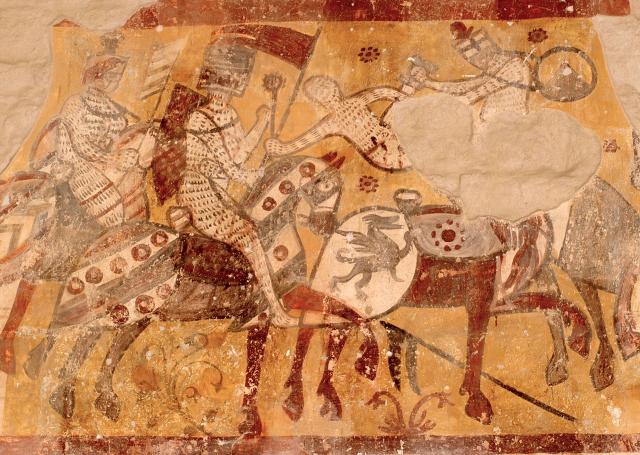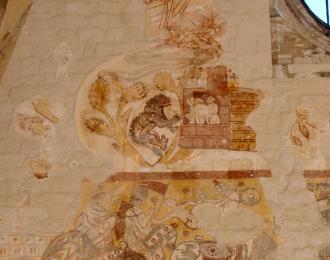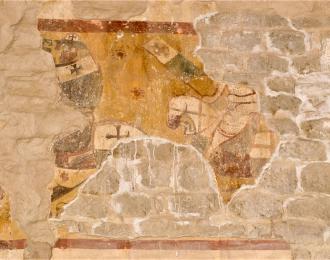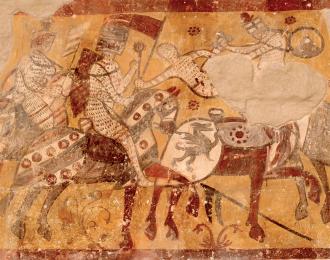Templar stories
San Bevignate Templar Complex

Bottega perugina (local workshop)
fresco
1260-1270
The controfacciata (inner wall of the façade) is covered in Templar-themed frescoes which climb the sides separately to then join and surround the rosette. The scenes which can still be made out show Knights Templar dressed either in armour or in monkish vestments; members of the order were both bellatores (Milites Templi) and oratores (preachers), meaning ordained clergymen.
In the lower portion Muslims and Crusaders confront each other in a scene identified by some as the Battaglia di Nablus (1242) [Battle of Nablus]: bearded Templar knights bearing standards with emblems of their order, sharing a mount (a second cavalryman can just about be made out on the horse in the centre), are defending a Templar Knight holding the celebrated Beauceant banner or standard of the order (a red cross on a symmetrically divided background, top half black, bottom half white).
The intermediate portion shows a group of Templars dressed in white monastic robes leaning from a fortified building of the Holy Land to remove a thorn from the paw of a lion, symbolising the eternal internal battles against evil fought by the “Poor Fellow-Soldiers of Christ and of the Temple of Solomon” meaning the Knights Templar. This is a reminder that in the same locality as the Chiesa di San Bevignate a previous place of devotion was dedicated to San Girolamo who was reputed to have accomplished this very gesture.
The Oriental setting for the scene is suggested by a luxuriantly exotic and fantastic vegetation, in the background of the composition (at the top) a ship cutting through a sea abounding in gigantic fish is a metaphor for the perils faced by the Knights Templar in the Holy Land where the crusaders defended their nation states and also Christian pilgrims in the far flung Middle-East or Orient.


